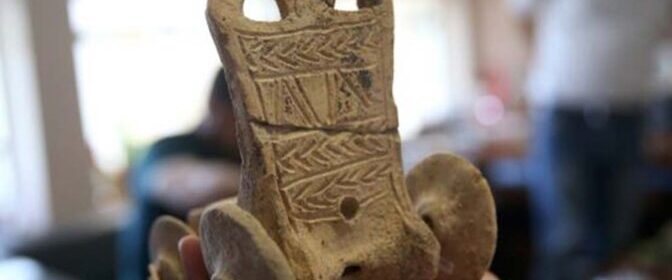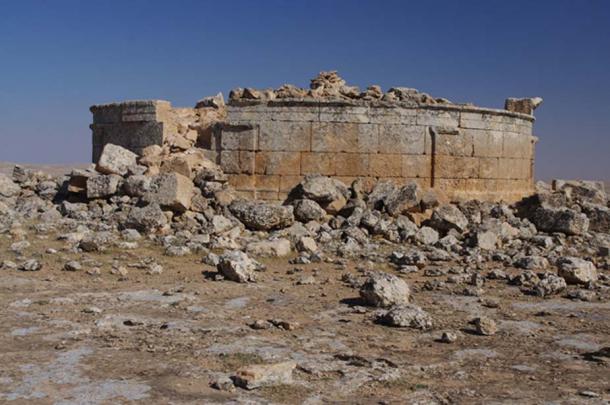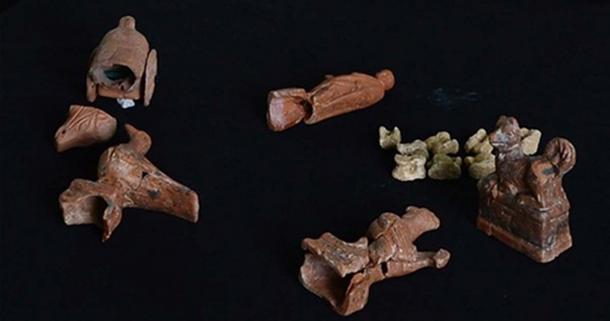5,000-Year-Old Toy Chariot Unearthed in Child Tomb in Turkey

5,000-Year-Old Toy Chariot Unearthed in Child Tomb in Turkey
Archaeologists have unearthed a 5,000-year-old toy chariot and rattle while excavating an ancient city in Turkey. Experts suggest that the recent discovery could shed light on how children in the Bronze Age used to play.
Ancient City of Sogmatar Yields Interesting Finds
IBTimes reports that the toys were unearthed as part of ongoing excavations in the ancient city of Sogmatar in the south east of Turkey. Previously believed to be one of the oldest known settlements on Earth, Sogmatar is also considered to be the region that Prophet Moses escaped from pharaoh and later engaged in farming there.
The hill town at the Centre of the village, points out that Sogmatar could have been established before Common Era . The remnants of walls and towers at the hill reveal that the hill town was used as a castle in the second century AD.
Assistant Professor Yusuf Albayrak of Turkey’s Harran University and member of the team of archaeologists that are digging in the area, said that Sogmatar was a Pagan religious center dating back to the second century AD.
Albayrak explained that after conducting a surface survey in the ancient city in 2012, he discovered that it was dedicated to the god of the moon, Sin.
Speaking about the historical importance of Sogmatar, Albayrak noted that the ancient city didn’t include just a temple but also a necropolis. “We found some 120 tombs in 2012. Seven in particular were really remarkable and almost all of the 120 tombs had a view of the mound.
We carried out searches in the mound and ceramic findings showed that this place was a settlement until recently. The tombs date back to the early Bronze Age, 5,000 years ago.
They are almost unique, in the shape of a well and reflecting the characteristics of this era. When the Romans arrived here they changed the architecture,” Albayrak said as IBTimes reports.

For the Children of Kings
The excavation works were launched in the area in May 2017, and since then archaeologists have unearthed many tombs, including the one containing the recently found toys. “We have so far obtained important findings in the excavation field,” Celal Uludag, the director of the Sogmatar excavations, told Turkish news agency Anadolu as IBTimes reported .
Uludag adds, “In a tomb in the necropolis area we found an earthenware toy horse carriage and its wheels. The toy dates back to the Bronze Age and is thought to have been produced for the children of kings or administrators in the city.
It shows us the sense of art and children’s sense of play 5,000 years ago,” highlighting the cultural and archaeological significance of this discovery.
Recent Discoveries of Ancient Toys Inside Greek Tombs
Two weeks ago, we reported another important discovery of ancient Greek toys in Turkey. Archaeologists found several ancient toys inside the tombs of children in the ancient Greek seaport city of Parion, now in modern-day Turkey.
Founded in 709 BC, the ancient city of Parion was a Greek colony that belonged to the Delian League. During the Hellenistic period it came under the domain of Lysimachus, and subsequently the Attalid dynasty. In Roman times, it was a settlement within the province of Asia. After that province was divided in the 4th century, it was in the province of Hellespontus.

Excavations of several ancient graves there revealed a number of children’s toys, which are believed to have been offered as gifts for the dead children to accompany them on their journey to the afterlife.
Professor Hasan Kasaoğlu from Atatürk University and director of the excavation works at Parion, stated that female figurines were discovered in tombs belonging to girls, while male figurines were unearthed in boys’ tombs. Kasaoğlu said that the new findings could provide valuable information about the sociocultural structure of the period, explaining that despite toys changing drastically throughout the centuries, the need of humans to play and be entertained has remained the same to this day.